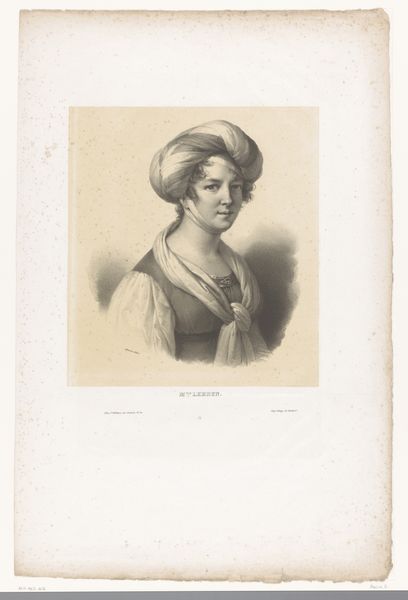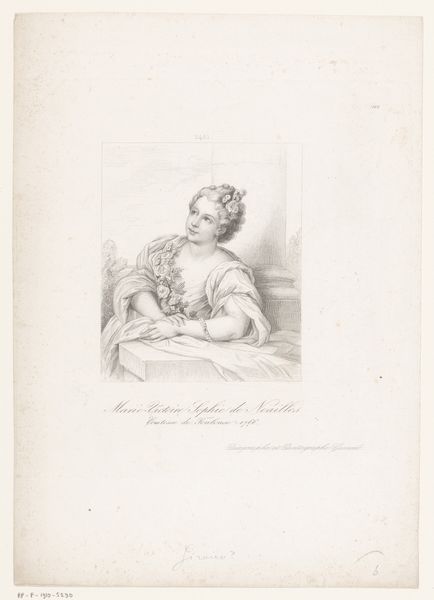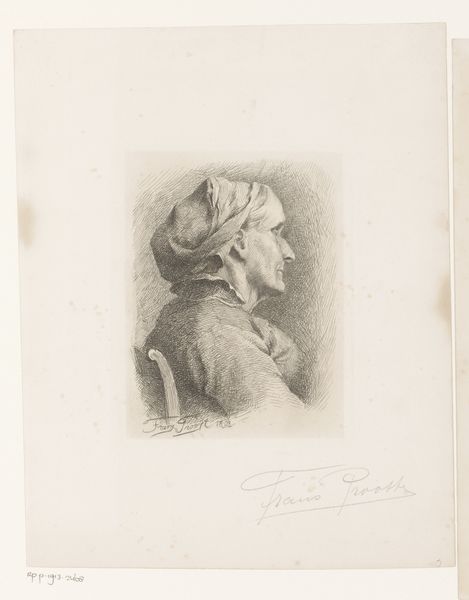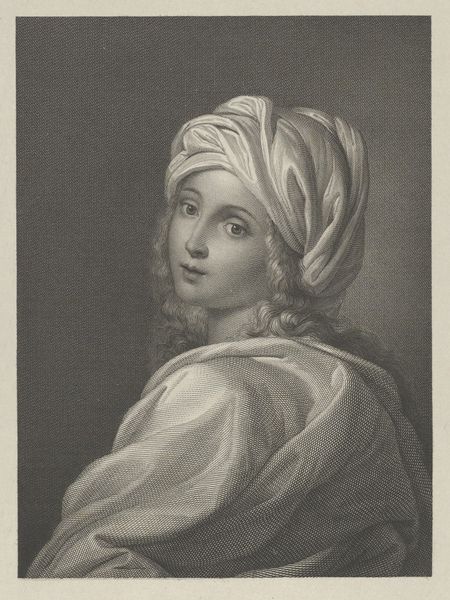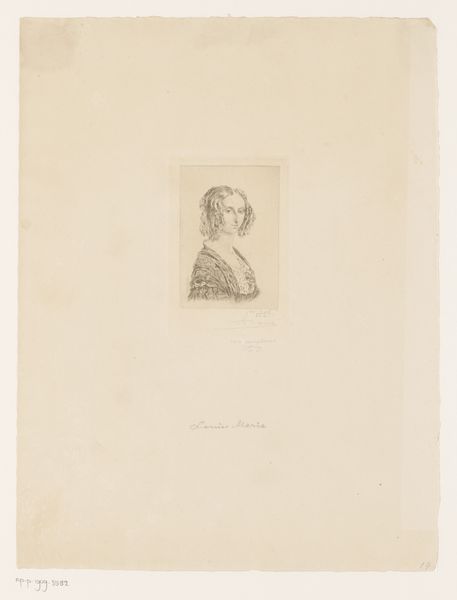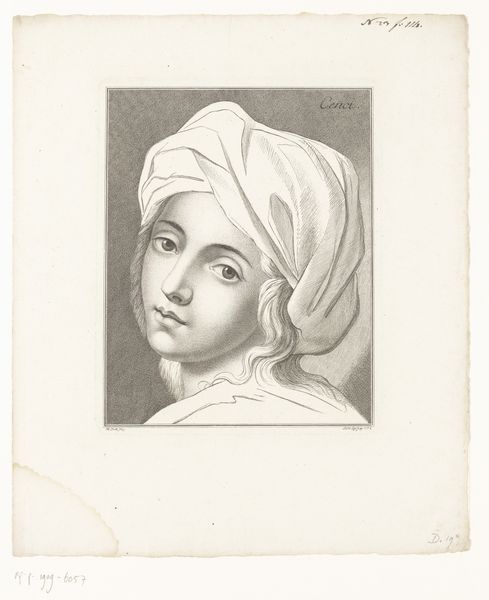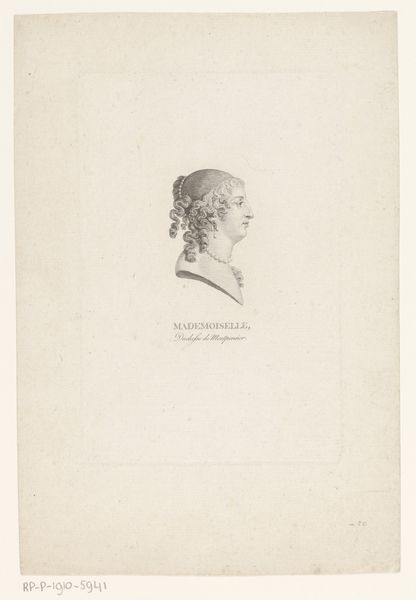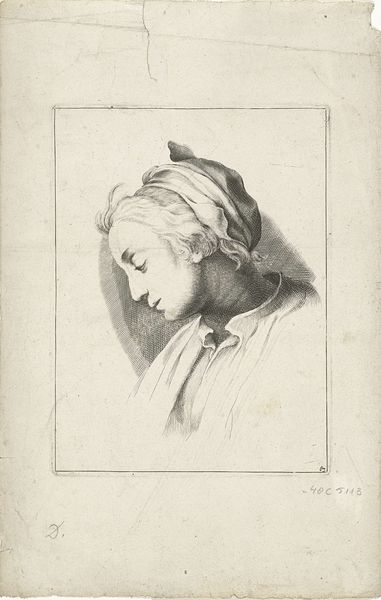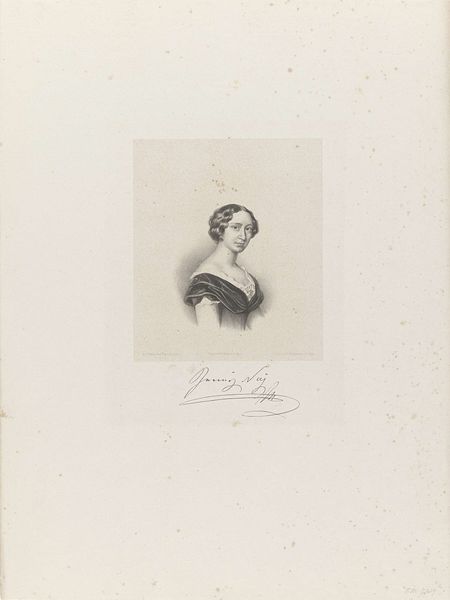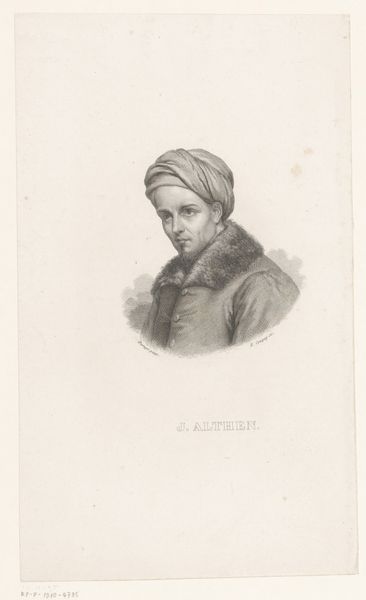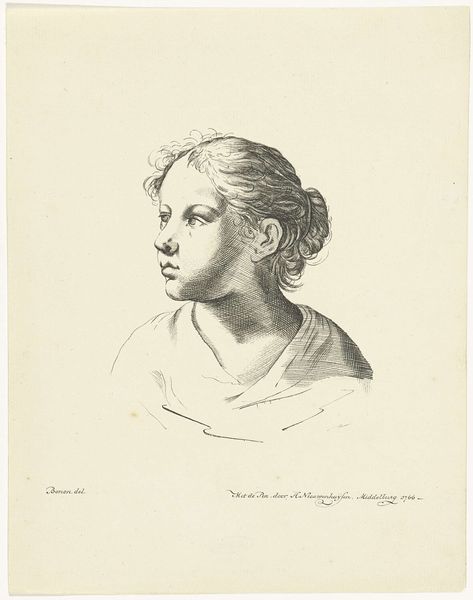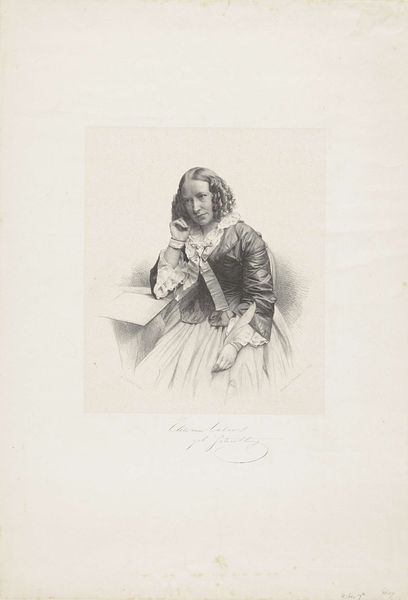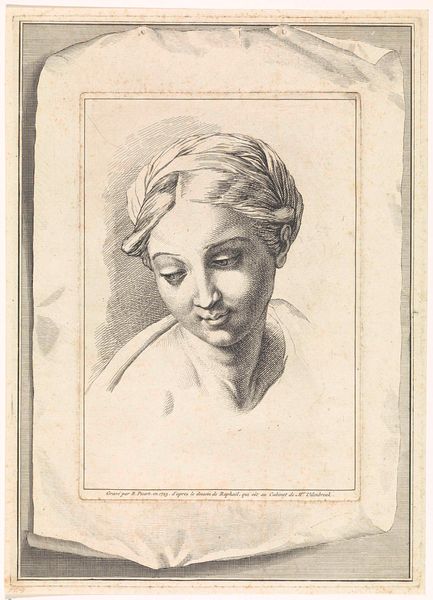
drawing, print
#
portrait
#
drawing
# print
#
figuration
#
romanticism
#
line
Dimensions: height 500 mm, width 368 mm
Copyright: Rijks Museum: Open Domain
Charles Louis Bazin created this print of the Roman noblewoman Beatrice Cenci in 1833. Observe the turban, a head covering that speaks volumes. In this depiction, the turban is not merely an exotic fashion statement, but an emblem of concealment and perhaps even forced seclusion. Turbans have been a signifier of status, religious identity, and cultural exchange across diverse societies, from the Middle East to Europe. Yet, here, it cloaks Beatrice in a veil of mystery, hinting at the turmoil beneath the surface. Consider how artists like Titian and Rembrandt have used turbans to evoke a sense of the exotic or to ennoble their subjects. Here, however, the turban is less about splendor and more about constraint. This constraint could be a reflection of Beatrice’s tragic life, a life cut short by execution for her involvement in the murder of her abusive father. The image resonates with a psychological depth that echoes the collective memory of oppression and the subconscious desire for liberation. Her gaze carries a haunting intensity, engaging us in a silent dialogue across centuries. It's a motif that continues to evolve, resurfacing in art, literature, and our collective consciousness.
Comments
No comments
Be the first to comment and join the conversation on the ultimate creative platform.
